Parent(s) Keau and Kamohoula | Name Henry Opukahaia | |
 | ||
Born c. 1792 Ninole, Hawaii Died February 17, 1818, Cornwall, Connecticut, United States | ||
Henry opukahaia story at kahikolu church feb 11 2012
Henry ʻŌpūkahaʻia (circa 1792–1818) was one of the first native Hawaiians to become a Christian, inspiring American Protestant missionaries to come to the island during the 19th century. He is credited with starting Hawaii's conversion to Christianity. His name was usually spelled Obookiah during his lifetime. His name Henry is sometimes Hawaiianized as Heneri.
Contents
- Henry opukahaia story at kahikolu church feb 11 2012
- Henry opukahaia presentation by debbie lee at lyman museum
- Biography
- Re interment
- Works
- References
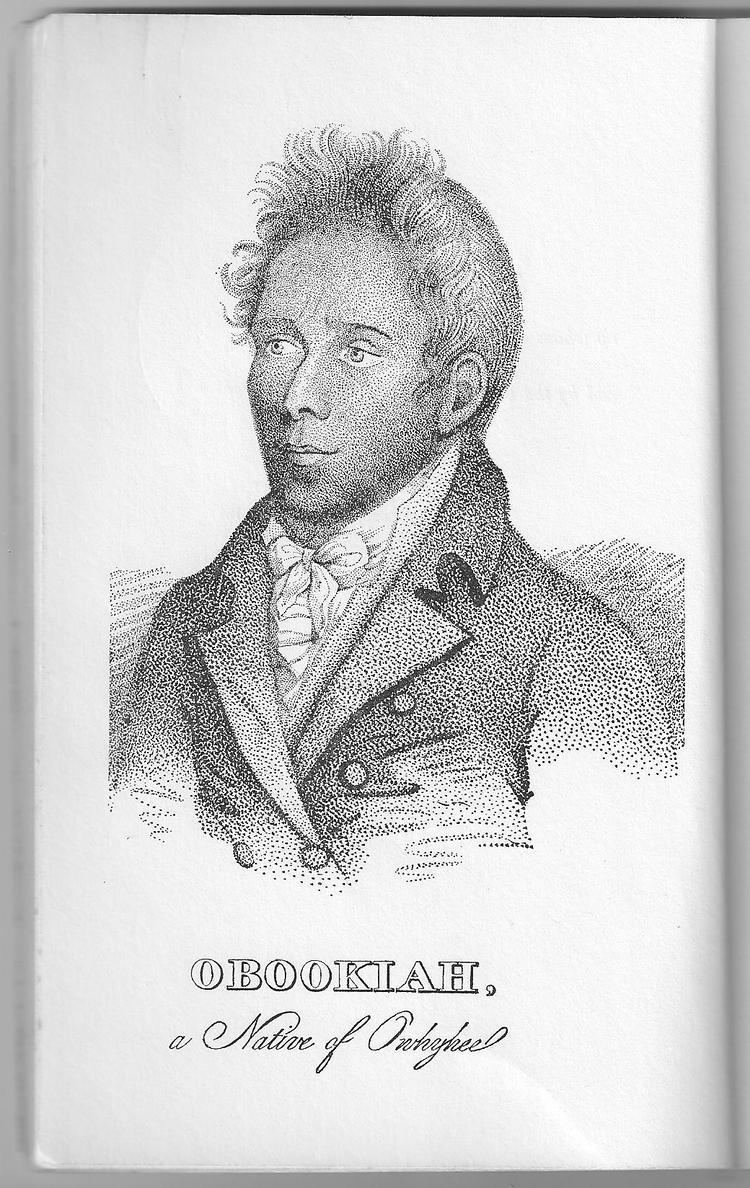
Henry opukahaia presentation by debbie lee at lyman museum
Biography
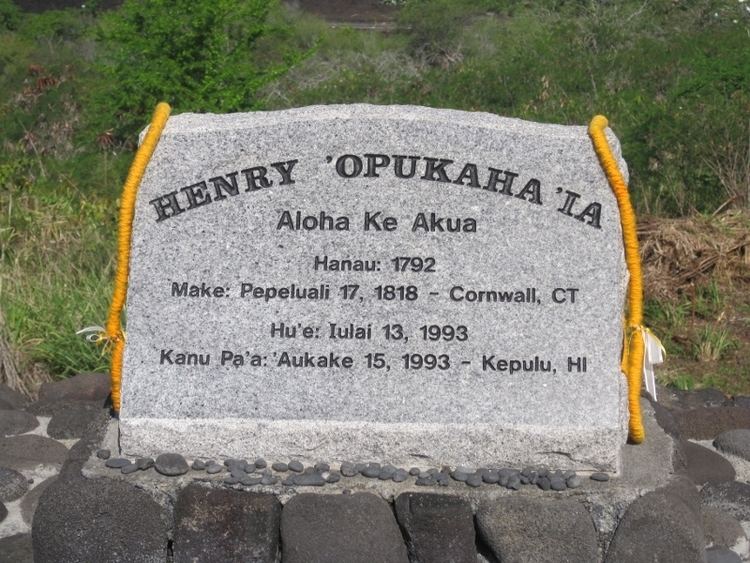
`Ōpūkaha`ia was born at Ka`ū on the island of Hawai`i in 1792. At the age of 10, his family was murdered by Hawaiian warriors. In 1807, when Captain Caleb Britnall took him aboard the Triumph, the teenage boy had his first English lessons en route to New Haven, Connecticut, along with fellow Hawaiian cabin boy Thomas Hopu. As a student in the New Haven area, he was looked after in a succession of homes, and worked summers to help earn his keep. The future Reverend Edwin W. Dwight, a senior in Yale College at the time, met him in 1809, when he discovered`Ōpūkaha`ia sitting on the steps of the college. When `Ōpūkaha`ia lamented that "No one give me learning," Dwight agreed to help him find tutoring. `Ōpūkaha`ia took up residence with one of Dwight's relatives, Yale president Timothy Dwight IV, a founder of the American Board of Commissioners for Foreign Missions, who instructed him in Christian and secular subjects. He had studied English grammar and the usual curriculum in public schools by the time he converted to Christianity in 1815, during the Second Great Awakening.
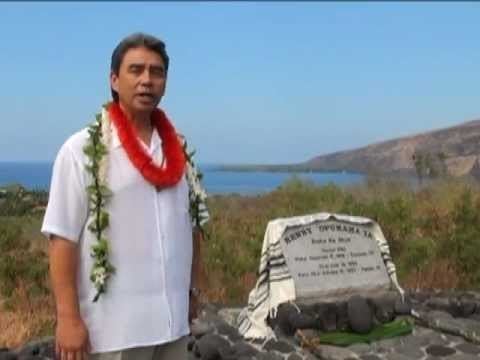
He and other Polynesians and Native Americans requested training to spread the Gospel back home. This inspired the founding of the Foreign Mission School in 1816, administered from Boston by the American Board of Commissioners for Foreign Missions (ABCFM). It had broad support from the residents of Cornwall, Connecticut, where it moved in 1817, and from donors elsewhere in Connecticut, Massachusetts and New York. During its ten years, about 100 students attended: "43 Native Americans, 13 Americans (white), and 20 Hawaiians, and other natives of the Pacific. including 2 Chinese".
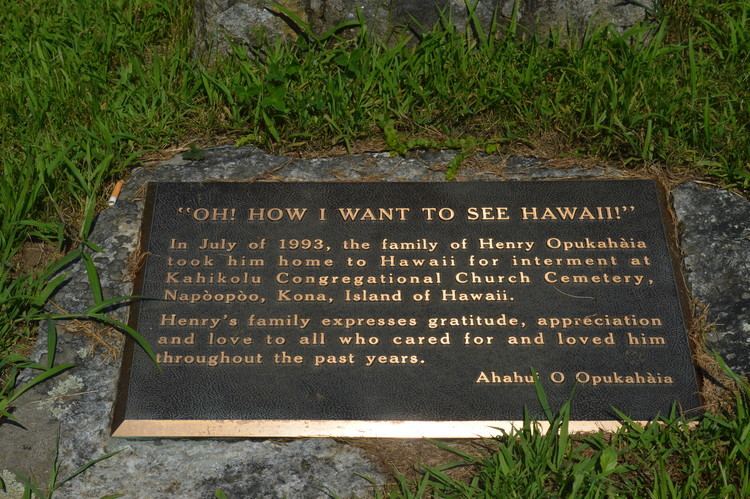
Even before this school opened, Edwin Dwight wrote in 1818, `Ōpūkaha`ia had begun "'reducing to system his own native tongue. As it was not a written language, but lay in its chaotic state, every thing was to be done. …he had made some progress towards completing a Grammar, a Dictionary, and a Spelling-book.'" None survives. Samuel B. Ruggles, one of the First Company of missionaries to Hawaii and a fellow student of `Ōpūkaha`ia at Cornwall, mentions in an 1819 letter that his own grammar (which does survive) was "much assisted by one which `Ōpūkaha`ia attempted to form." Elisha Loomis, who was to be printer for the first mission, was inspired to join it by reading `Ōpūkaha`ia's memoirs, edited by Dwight in the year of his death from fever, over a year before the First Company set sail from Boston.
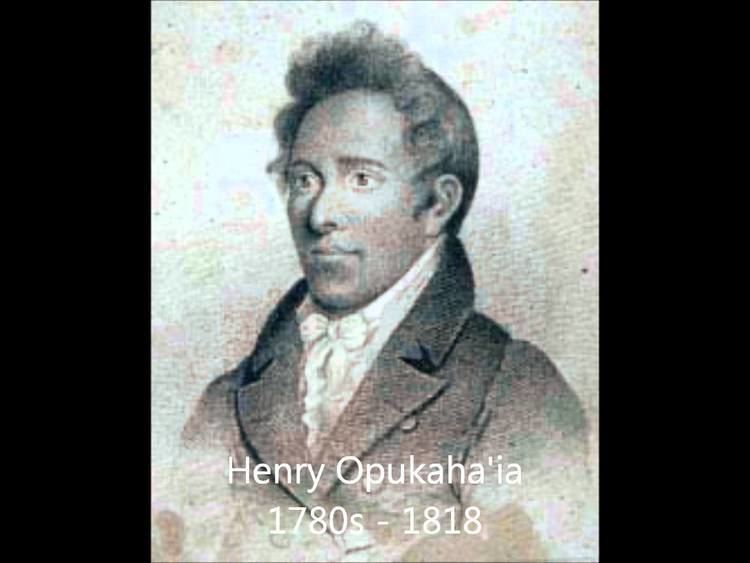
`Ōpūkaha`ia planned to return to Hawaii himself to preach, but contracted typhus fever and died in 1818 in Cornwall at the age of 26.
In 1826 the Foreign Mission School was closed by a scandal – two interracial marriages were too much for Cornwall residents. But both the school and `Ōpūkaha`ia were a catalyst for the Sandwich Island Mission and for the first concentrated efforts to analyse the language.
Re-interment
In 1993, `Ōpūkaha`ia's family decided to return his body from his grave in Connecticut to Hawaii. On Aug. 15, 1993, his remains were laid in a vault facing the sea at Kahikolu Church near the town of Napoʻopoʻo, Kona, on the Island of Hawaii. It was the third church established in Hawaii by missionaries inspired by Opukahaʻia. Hawaii's churches observe the third Sunday in February as a day of commemoration in honor of its first Christian. A plaque at the Cornwall gravesite reads: "In July of 1993, the family of Henry Opukahaia took him home to Hawaii for interment at Kahikolu Congregational Church Cemetery, Napo'opo'o, Kona, Island of Hawaii. Henry's family expresses gratitude, appreciation and love to all who cared for and loved him throughout the past years. Ahahui O Opukahaia"
Works
He nearly completed a Hawaiian dictionary, grammar, and spelling book, besides translating the Book of Genesis into Hawaiian. The Memoirs of Henry Obookiah were published in New York City in 1818 and have been republished by the Woman's Board of Missions for the Pacific Islands several times since the 1960s. They have recently republished the 195-year-old book with a new epilogue of how his body was returned to the Big Island of Hawaii, along with new photographs.
